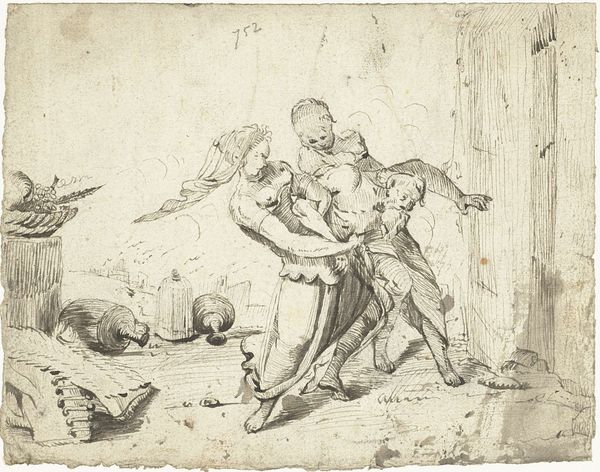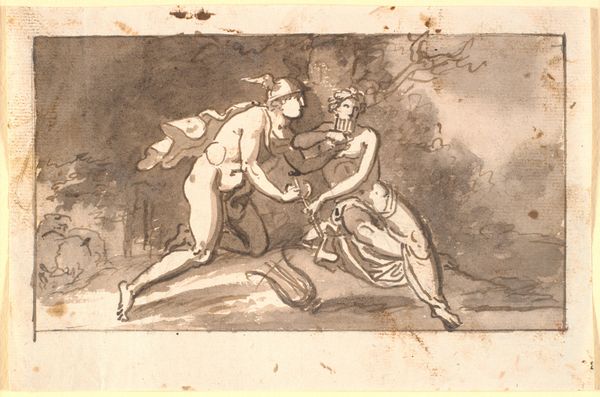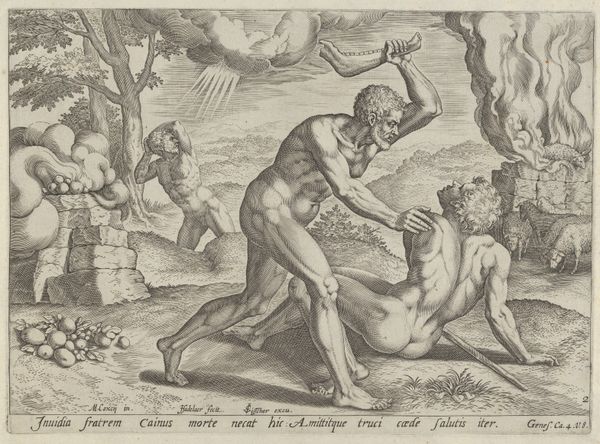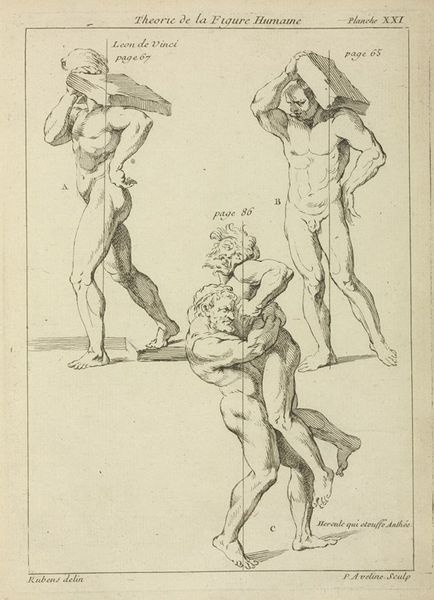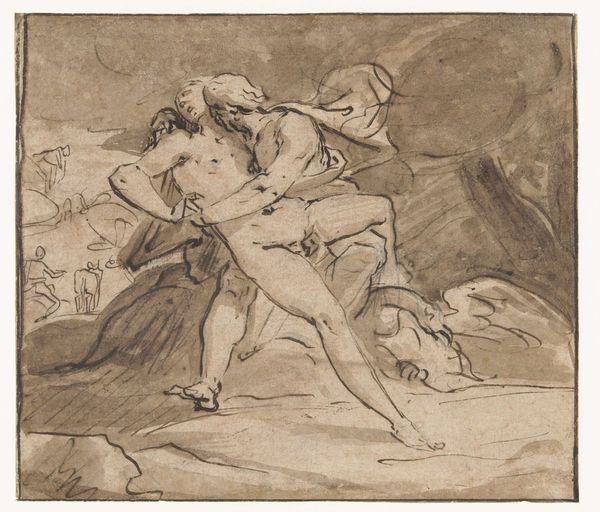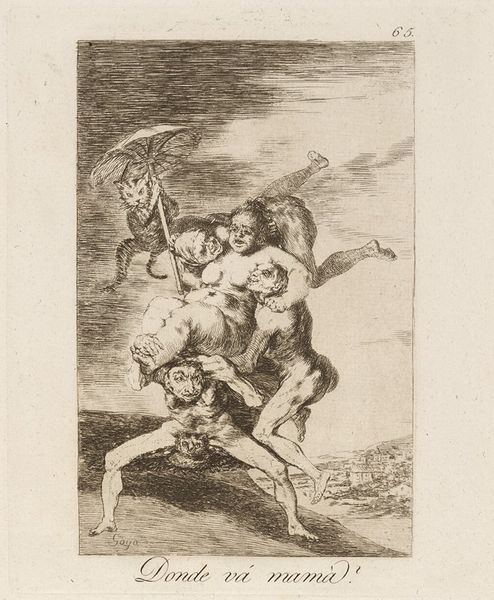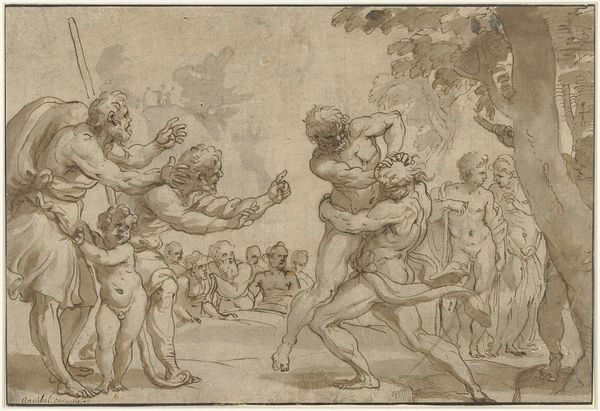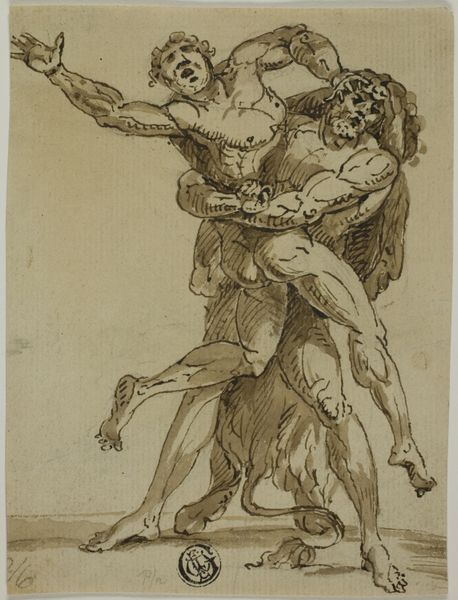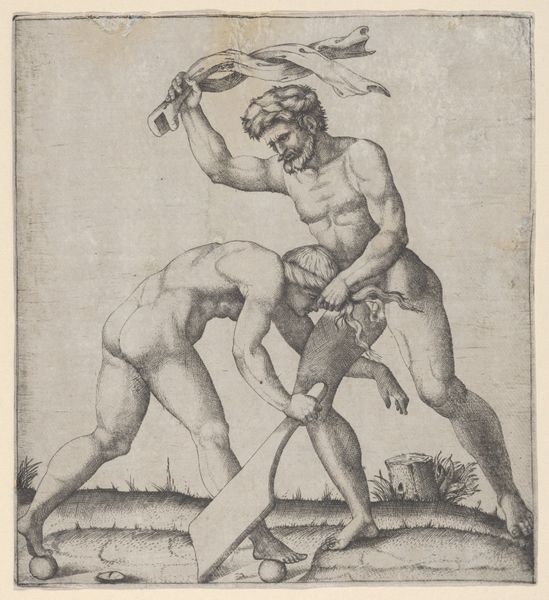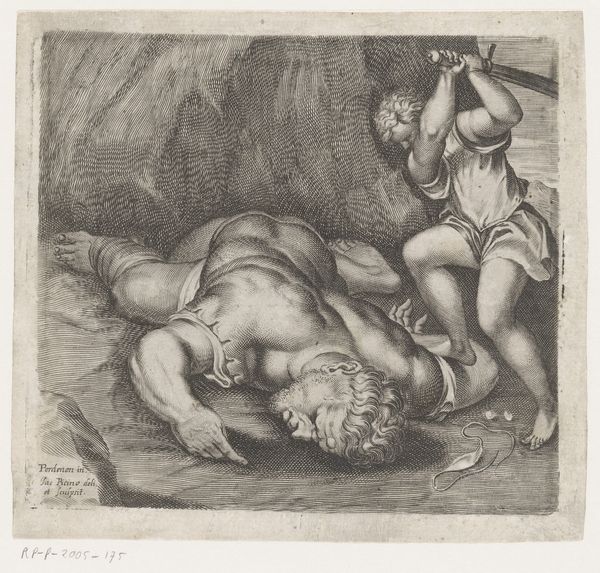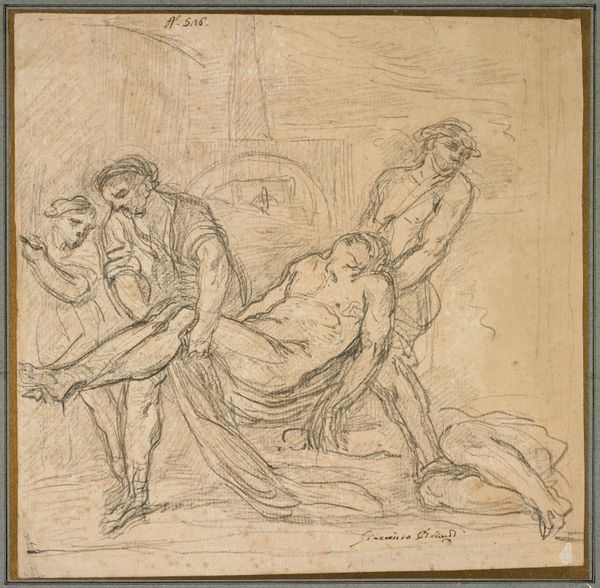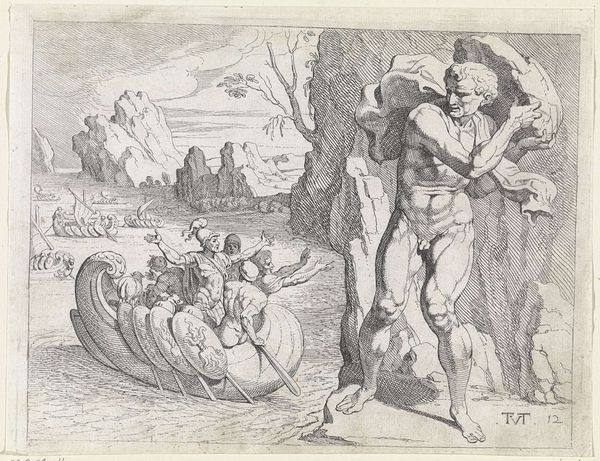
drawing, ink
#
drawing
#
narrative-art
#
baroque
#
figuration
#
ink
#
history-painting
Dimensions: height 137 mm, width 195 mm
Copyright: Rijks Museum: Open Domain
Editor: This is "Lot and His Daughters" a drawing in ink by Gerard ter Borch from 1622, currently held in the Rijksmuseum. I’m struck by the vulnerability in Lot's posture, like he's being handled rather roughly. What narrative and symbolic elements do you find most compelling? Curator: Indeed. The scene itself is rich in symbolism. Consider the figures: Lot, burdened not only by age but also by sin and perhaps inebriation; his daughters, acting as both caregivers and instruments of fate. The image recalls the biblical tale with its psychological tension—incestuous conception rooted in trauma, the destruction of Sodom looming in the background, not necessarily visible here, but part of its cultural memory. Notice how Lot's daughters dominate him in this image. How might that reflect broader cultural anxieties about familial and gendered power dynamics? Editor: I hadn't really considered the gender dynamics in that light, very interesting. It’s uncomfortable to think of it that way, but undeniably there. Is there a tension here, perhaps, between duty and something more sinister? Curator: Precisely. The daughters' actions can be interpreted as an extreme act of preserving their lineage after devastation, driven by duty. Yet, this devotion blurs into transgression. Ter Borch masterfully hints at the psychological burden of such a decision through their gestures and the dramatic tension of the composition. These symbols resonate with cultural understandings of survival and morality. Is survival at all costs morally defensible? The question resonates powerfully. Editor: Looking at it that way, this drawing asks far more questions than it answers, stirring some complicated thoughts and feelings about moral boundaries. Curator: Yes, visual symbols often invite interpretations, offering an active dialogue between artwork and viewer across generations, which keeps the image emotionally relevant through the passage of time. The story of Lot is culturally memorized to become continuously morally debated. Editor: I see now, and the questions it provokes are pretty enduring. Thanks for this intriguing insight!
Comments
No comments
Be the first to comment and join the conversation on the ultimate creative platform.
